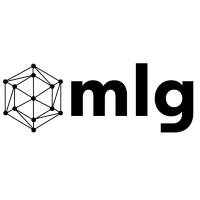|
|
|
Security |
|
|
|
|
SGX / PoET
All transactions are signed by known identities.

PoET implementation will depend on that of SGX. SGX is a set of instructions which allows application to run in sectioned-off areas of memory called enclaves. This aims to protect sensitive data and code from disclosure or tampering, both when stored and at runtime. Unfortunately, since Intel first introduced SGX in 2013, several weaknesses have been found in its design.
https://www.theregister.co.uk/2016/02/01/sgx_secure_until_you_look_at_the_detail/
|
Data is only shared between parties involved in the transaction, verifiers, and permissioned observers. This allows an extra layer of security from traditional DLT where the data is spread throughout the network.

|
"Block Security Protocol" (BSP)

Employs a BSP to implement the signature function on each data bock during PoA cosnensus. Only the blocks with authorized signatures can be mined and accepted.
|
|
|
|
Permissioned, Permissionless depending on application

Hyperledger Sawtooth supports both permissioned and permissionless blockchain networks. This provides flexibility but lacks the prescriptive level of security hyperledger fabric has.
|
Permissioned

|
Permissioned Aspects

Only permissioned parties can view the raw transactional data stored in the public blockchain. To all others, it will be hashed and secured.
Anyone can become a node, but there is a hard cap of 101 Authority Nodes. It requires a great deal of transparency and public capital to become a node.
|
|
|
|
Configrable permissions for any node cluster within the network

Sawtooth is built to solve the challenges of permissioned (private) networks. Clusters of Sawtooth nodes can be easily deployed with separate permissioning. There is no centralized service that could potentially leak transaction patterns or other confidential information. There is no concept of private channels as seen with Hyperledger fabric
contributors are investigating both trusted execution and zero-knowledge cryptographic approaches
|
Privacy concerns are addressed through the pluggable uniqueness services, and restriction of viewing transactions.

|
Yes

Transaction Data Privacy Protocol (TxDP): Ensures privacy of transaction data.
|
|
|
|
Algorithms |
|
|
|
|
PoET
Dynamic, Pluggable Consensus Algorithms

Sawtooth supports pluggable consensus algorithms but offers their own method —Proof of Elapsed Time (PoET). The PoET consensus has each validating participant wait a random amount of time. The first person to finish waiting becomes the leader of the new block. This provides a secure authority mechanism without the computational race and energy draw of Proof of Work (PoW).
|
Notaries - Pluggable Framework, Validity consensus and Uniqueness consensus

transaction validity and transaction uniqueness.
https://docs.corda.net/key-concepts-consensus.html
Corda uses special Notary Nodes to reach consensus. Notaries are nodes that specifically address double spend attempts.
|
Proof of Authority

Consists of 101 Authority Nodes that are controlled by separate, self-interested entities. Due to the variety of companies, this will secure the network and ensure a trustless environment. PoA allows for a higher number of TPS than PoW and PoS, meaning VeChain can support up to 10,000 TPS.
|
|
|
|
Efficiency |
|
|
|
|
Fast

Depends on implementation. Processes transactions in parallel to accelerate block creation and validation
|
Fast

Built for financial applications
|
No data

|
|
|
Block Confirmation Time
Details
|
Varies

Depends on implementation. Processes transactions in parallel to accelerate block creation and validation
|
TBD

|
Fast

Set during launch at 10 seconds, and will be iterated after use.
|
|
|
|
Development |
|
|
|
Proprietary Codebase
Details
|
Open Source

|
Open Source

|
Open source with proprietary applications

https://github.com/vechain
|
|
|
|
General |
|
|
|
Blockchain / DLT type
Details
|
Federated / Consortium, Permissioned Network

Federated Blockchains operate under the leadership of a group. As opposed to public Blockchains, they don’t allow any person with access to the Internet to participate in the process of verifying transactions. Federated Blockchains are faster (higher scalability) and provide more transaction privacy - important aspects for Enterprise focused deployments
|
Not a blockchain. Uses DLT to create transaction efficiencies between permissioned parties rather than the same ledger for the entire network, which R3 Corda believes is inefficient.

https://vimeo.com/205410473
|
Public

|
|
|
|
Modular Architecture. Incorporates IoT Sensors that can broaden the use case.

Location, Temperature, Humidity, Shock, Tilt, Motion, Shock - all examples of data that can be captured.
|
Less focus on modularity

Focus is on financial applications, but may support more use cases in the future.
|
Yes

VeChain exists as a platform to be developed on. Meaning the core features and services can be applied in a number of industries. Some utilizing IoT, some just using the consensus mechanism.
|
|
|
|
1000 TPS. Built to be scalable in the way that consensus algorithms can be changed, applications are separate from the core system, and transactions can occur in parallel.

The different consensus mechanism features were designed to cater to networks of different sizes and with different requirements. Sawtooth targets large distributed validator populations that do not require much computational power.
|
Corda focuses on scaling through reducing inefficiencies in consensus mechanisms. By limiting involvement to just the transacting parties, beneficiaries, and verifiers it aims to position itself as more scalable than PoW

performance considerations https://www.corda.net/2017/12/dlt-performance-considerations/
|
50 - 10,000 TPS

50 TPS is currently the maximum. Once VeChain moves to thier mainnet, they plan to scale their TPS to 10,000. This will enable Enterprise level support for financial and sensor data.
|
|
|
|
Varies

Depends on implementation
|
Varies

|
Depends on implementation

|















